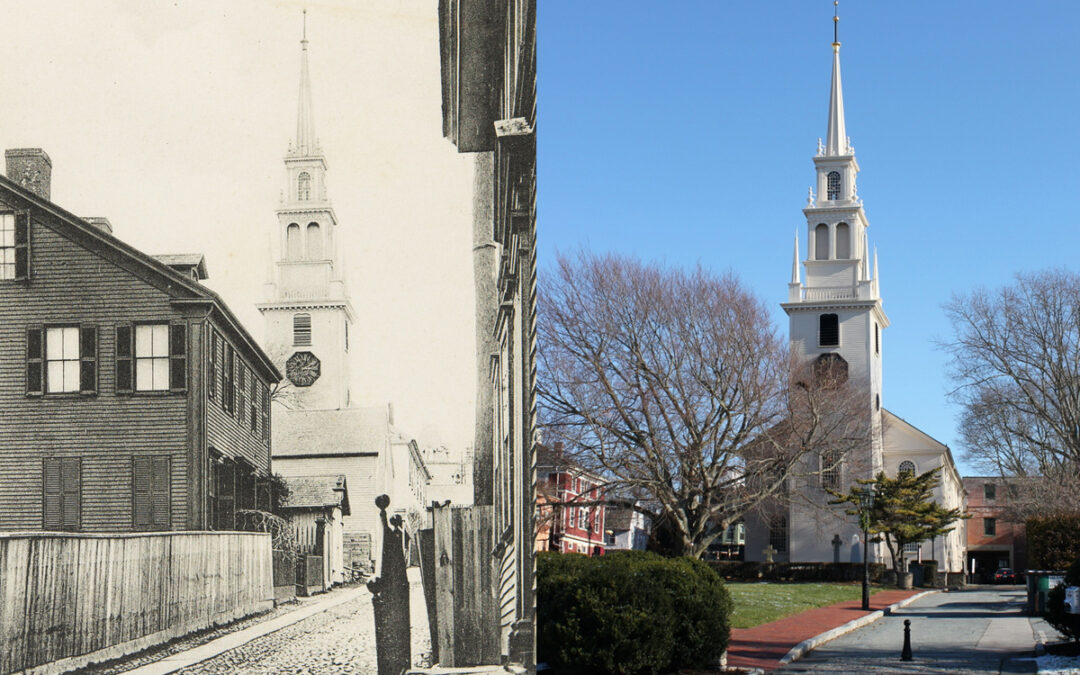Buildings don’t just make history at the time of their construction. They often reflect the times when they were enlarged or chosen for restoration and reconstruction rather than demolition. They also become important again when the area around them is redeveloped. This is certainly the case with The Trinity Church, which is located on what is currently known as Queen Anne Square in Newport.
Trinity Church was originally designed in 1725 by Richard Munday, who is acknowledged as one of the great Architect-Builders of the American Colonies. It is widely considered his first great work of architecture. Born c.1685, Munday is credited with bringing the style and philosophy of Sir Christopher Wren from London to the American Colonies and applying that grand style to the architecture of the early colonial Newport. Originally trained as a boat builder, Munday brought his skills and pragmatic perspective to the realm of design and building. Many architectural historians, including Antoinette Downing and Yale professor Vincent Scully, identified Munday as the individual who was largely responsible for first bringing high Baroque style to Newport and calling the period “Richard Munday’s Era” in their book The Architectural Heritage of Newport, Rhode Island.
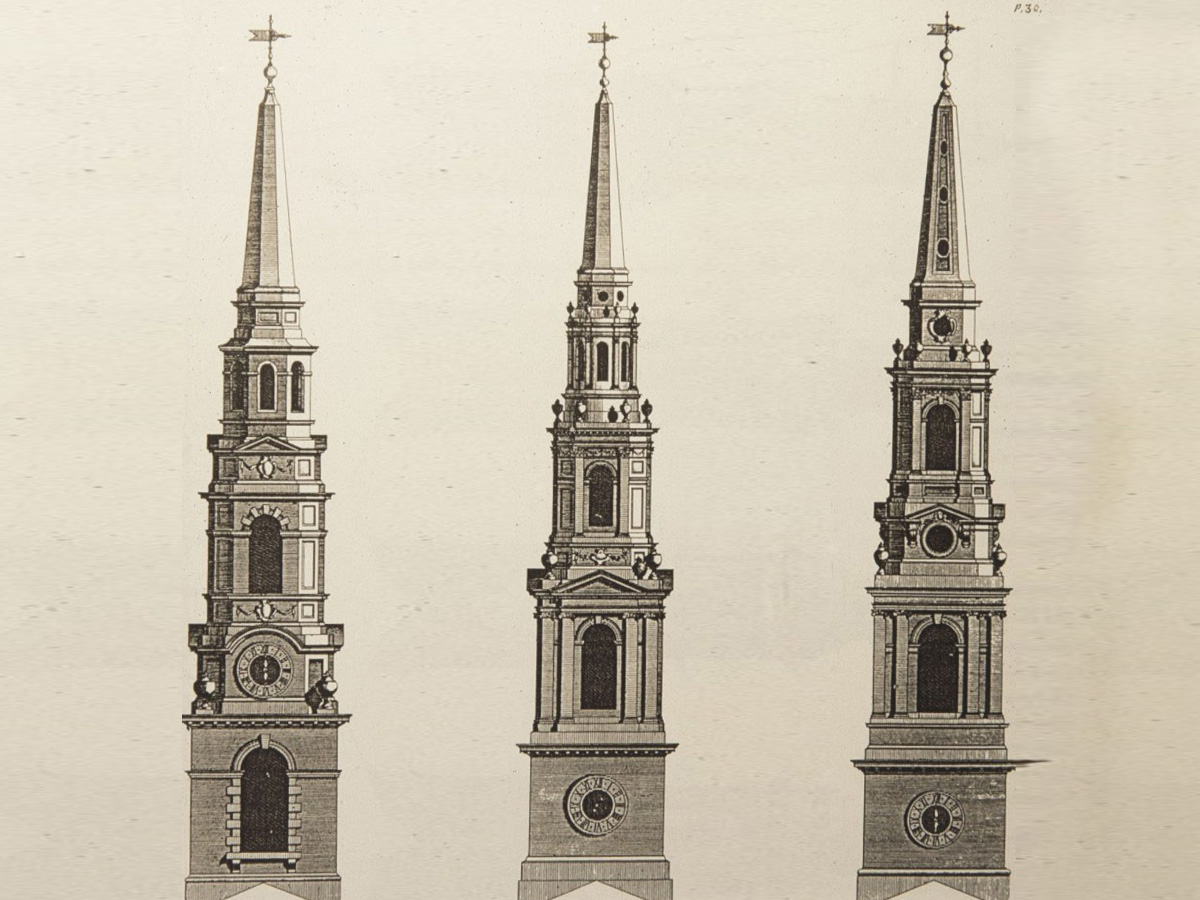
Comparison of Steeple Designs
The design of the exterior of Trinity Church seems strongly modeled upon St. Martin in the Fields Church and James Gibb’s St. Mary-le-Strand in London, with their soaring multi-tiered spires above the entries. When the body of the church was built, Munday was most likely working from secondhand models seen in books from Boston. The elaborate tower seems drawn from Gibb’s Book of Architecture published in 1728, which would have found its way to the colonies soon after.
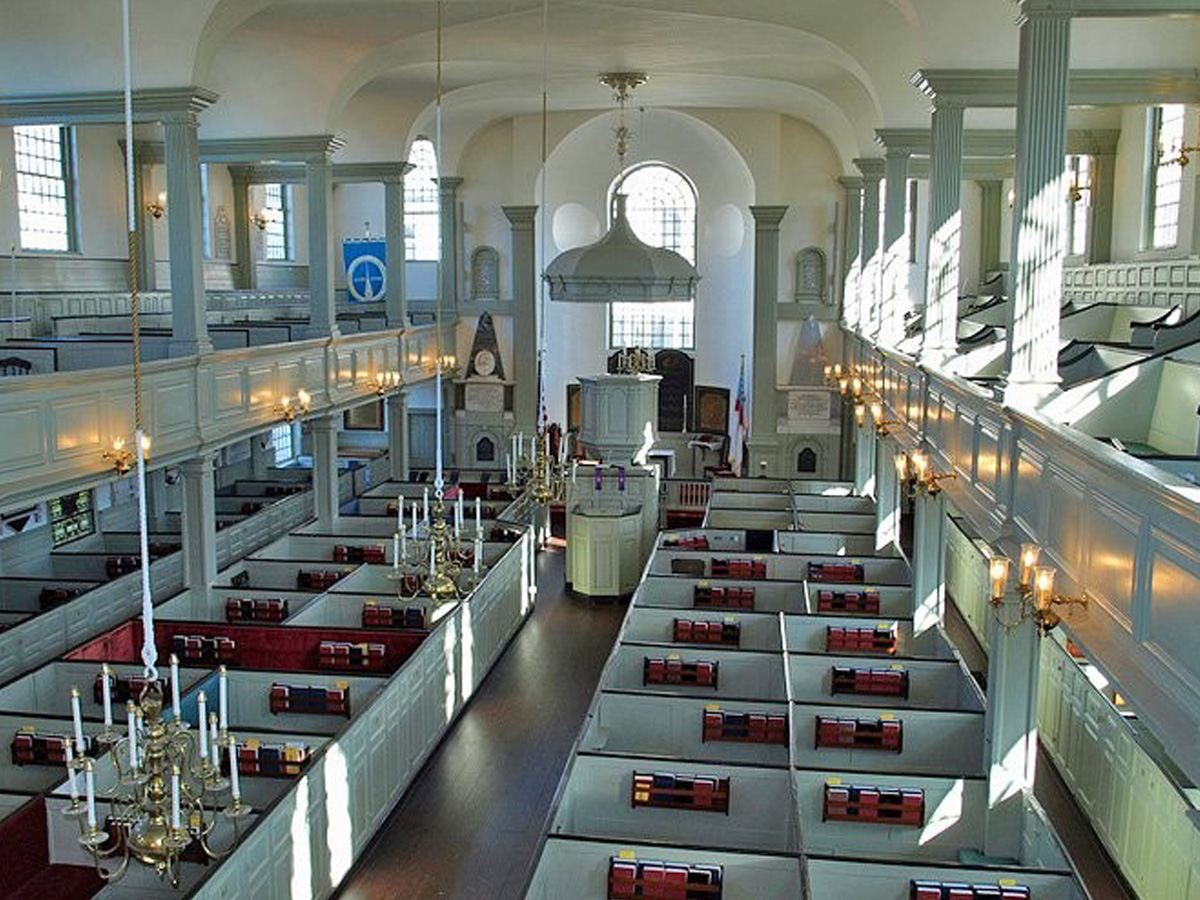
Interior of Trinity Church
The interior however seems to relate more to the nautical architecture of ships than the masonry of the models. Its great vaults project from the piers supporting the balconies in ways that would have been familiar to builders like Munday living in the 18th century in a seaport town like Newport. Scully and Downing observe that the triple “wine glass” pulpit at Trinity Church is unique in that it is in line with the central aisle of the church and obscures the visibility of the altar. This is partly because the church was expanded by two bays in the 1762 as the congregation continued to grow and flourish. The Trinity Church was made a National Historic Landmark in 1968.
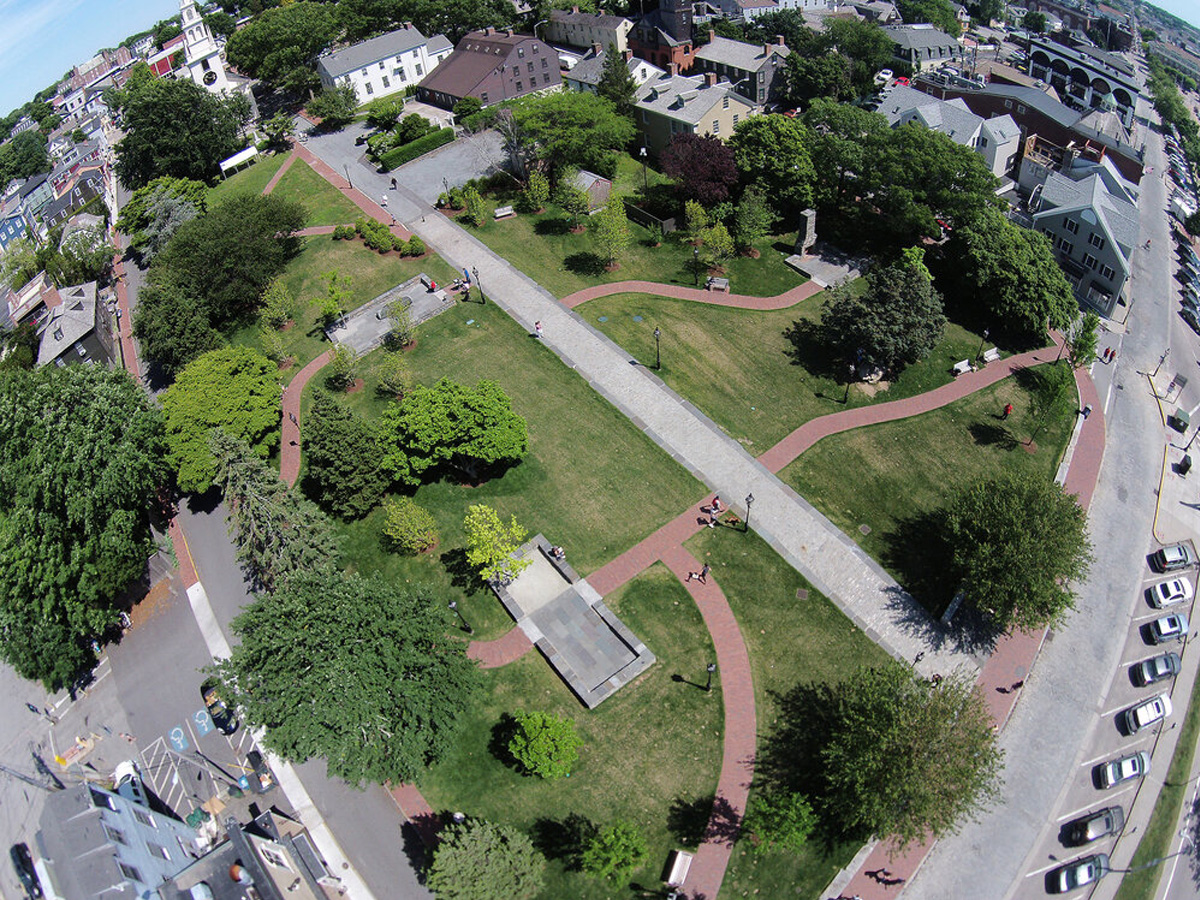
Aerial View of Trinity Church & Queen Anne Square
Unlike other communities where the Anglican Church sat a place of primacy within the community, Trinity Church was originally situated within the dense urban construction of Colonial Newport. It shared its position in the city with churches of many other faiths, making it part of the broader expression of religious freedom, which separated Newport from other urban centers around the American Colonies. It continued in this situation until the 1970’s when Doris Duke helped undertake its restoration. It is said that she greatly admired its soaring steeple, which could be seen from the harbor but was obscured from a closer distance. As the Pell Bridge was completed in 1968 and America’s Cup Boulevard was being cut through downtown Newport, a series of factories and small houses became available for sale. She purchased those buildings and either demolished or relocated them to open the viewscape towards Trinity Church.
Miss Duke (as she was widely known in the Newport community) created a new park to the west of the building and named it “Queen Anne Square,” which was the original name of Washington Square, the original Newport town square located a few blocks northward. There were positives and negative to this drastic change to the urban fabric of the city. On the positive side, the new urban design showcased the building as it had never been seen previously and the city had a compact new park right in the center of town. On the negative side, the park was largely undersigned and the trees and shrubbery grew out of control, so it ended up becoming an area where indigent people congregated. It also created an artificial setting for the Trinity Church, making it look like it once had priority over all of the other religions in the city, which was the opposite of the pluralist situation that originally existed.
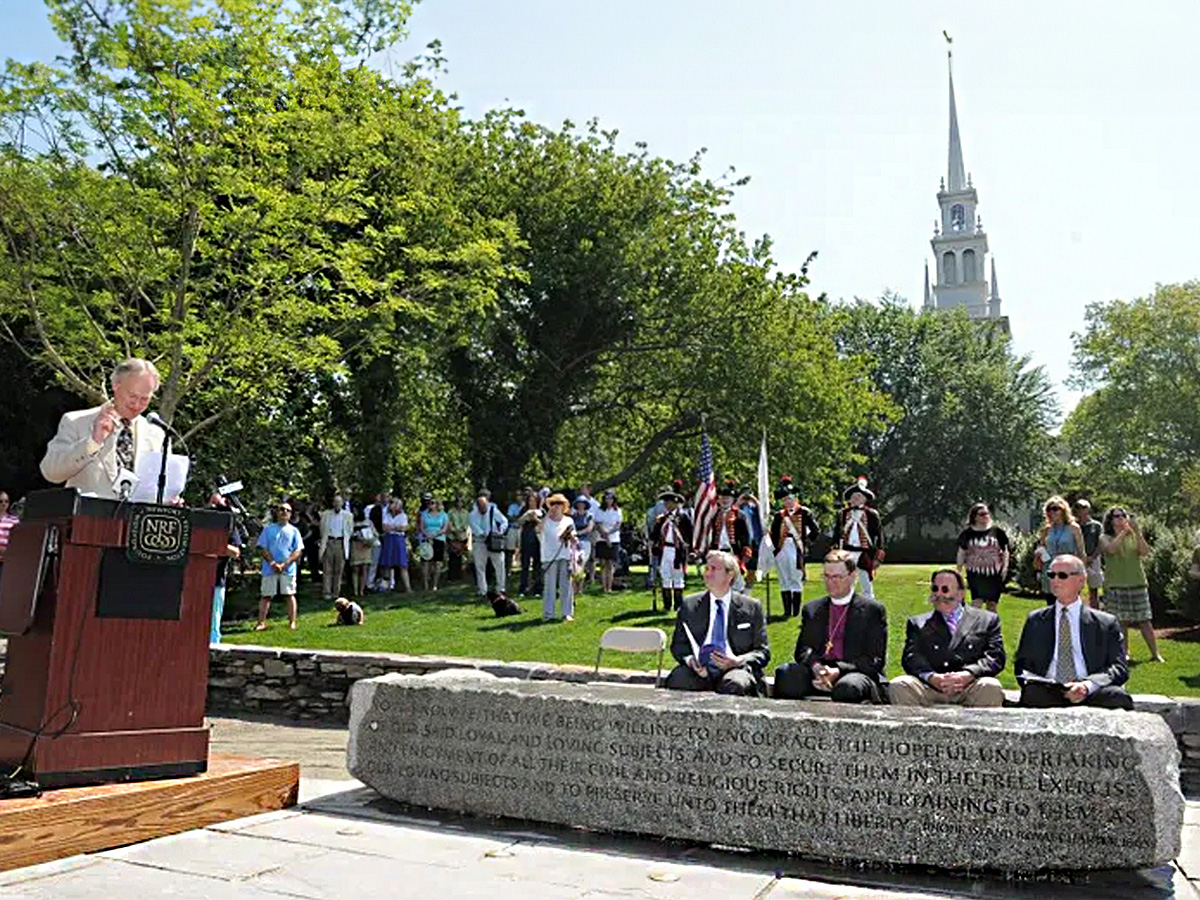
Reconstruction Unveiling Ceremony 2013
With these challenges in mind and under the leadership of the Newport Restoration Foundation Executive Director Pieter Roos, noted architect Maya Lin was identified to redesign the park and the fund to undertake the work was raised. Maya Lin, renowned for her design of the Vietnam Veterans Memorial in Washington D.C., brought her unique vision to Newport. Her design aimed to restore the area’s original urban character while incorporating modern design elements.

Gathering Areas within Colonial Footprints
Lin’s design concept, which she named “The Meeting Room”, focused on creating a pedestrian-friendly environment with the foundations and chimneys of colonial scaled “ghost buildings” to serve as gathering areas. She proposed removing the existing parking lot and replacing it with a beautifully landscaped plaza. In her vision, the plaza would feature a series of interconnected foundations providing a variety of seating options and views of the surrounding buildings. To enhance the square’s visual appeal, Lin also planned to incorporate water features, sculptures, and native plantings.
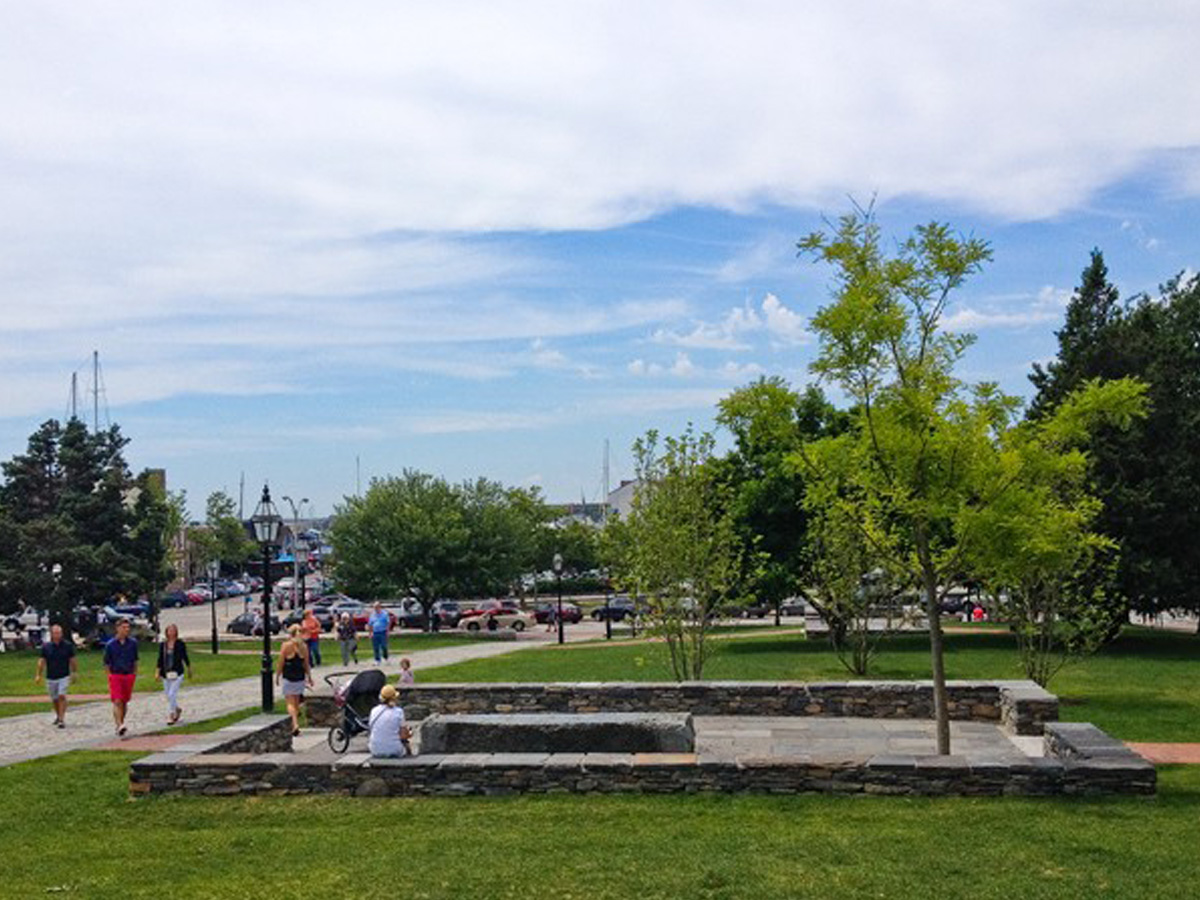
Vibrant Public Gathering Places of Newport’s Downtown
The completed reconstruction was unveiled on May 31, 2013, and is now recognized as a resounding success. Lin’s design has transformed the space into a variety of vibrant public gathering places. The terraced plaza, water features, and sculptural elements add a sense of sophistication and beauty to the downtown landscape. The project also helped to revitalize the surrounding neighborhood, attracting new businesses and users to the area.
Today, Queen Anne Square and Trinity Church are beloved destinations for both locals and visitors to Newport alike. The different eras of building, from the original Colonial Era church to the twenty-first century park design, blend together to help tell the unfolding evolution of Newport as a city, transforming it from a place known for religious freedom to a modern world-class destination for historic architectural tourism requiring park areas to meet the needs of visitors and residents alike.
Ross Sinclair Cann, AIA is an historian, educator and practicing architect living and working in Newport at A4 Architecture. He holds architectural degrees from Yale, Cambridge, and Columbia Universities and is a member of a numerous committees, commissions, and boards. Maya Lin was his Teaching Assistant in Vincent’s Scully class at Yale, and he served as the Master of Ceremony for the rededication of Queen Anne Square in May 2013.
